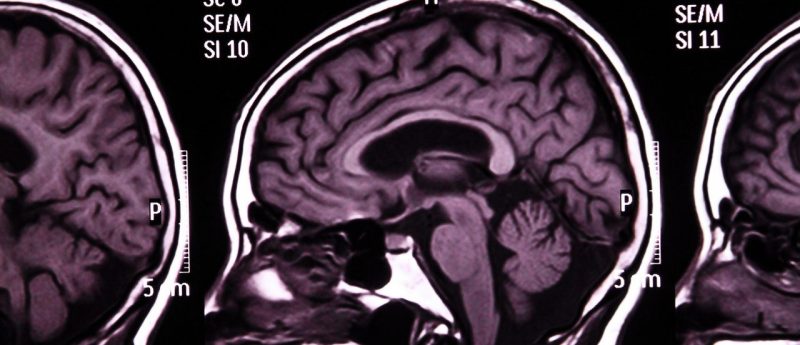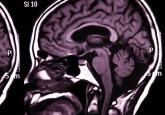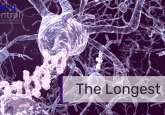Making dementia history: the National Survey of Health and Development and Insight 46

Lauren Pulling, Editor of Neuro Central, explores the longest-running lifetime cohort study in the world, including the new neuroscience clinical sub-study, Insight 46.
An extraordinary study
In 1946, an extraordinary study began. Amid growing public concern around the effects of environmental and parental factors on fetal and child development, James Douglas – a physician with an interest in social medicine – launched the National Survey of Health and Development (NSHD); a study comprising 5362 individuals born in England, Scotland and Wales in one week in March 1946.
Funded by the Medical Research Council (MRC) since 1962, data have been collected regularly on these individuals with over 20,000 variables having been recorded over a lifetime, and approximately 2700 participants remaining in active follow-up. Remarkably, data were intended to be collected for 1–2 years; yet, 70 years on, researchers are still gathering data on this unique cohort. In addition to the longitudinal nature of the study data, this cohort is particularly interesting given the health and life circumstances of the participants. This, together with the fact that physical, cognitive and environmental measures have been collected on this group since childhood, makes the NSHD – the longest-running study of its kind in the world – an invaluable resource for research across the spectrum of health and disease.
What have we learnt from the 1946 cohort so far?
From its infancy as a maternity study, through to the life-long study it has now become, the NSHD has always addressed wide-ranging questions across health and science, as well as socioeconomic issues and policy. Changing directorships have influenced the nature of research themes, though the long-term vision of the NSHD remains to “capture change in physical and cognitive capability and in the main body systems contributing to the chance of healthy ageing or a life affected by disease and disability” [1]. As such, key findings to come out of the project have concerned areas ranging from blood pressure, body mass and cardiovascular disease, through to women’s health, cognitive aging and mental health.
Now in its seventh decade and under the directorship of Diana Kuh (UCL, London, UK), the NSHD has been transformed into a world-class interdisciplinary study of aging, running within the MRC Unit of Lifelong Health in Ageing (London, UK). With an aging population both in the UK and across the world, the burden of age-related decline is rising on social, political and research agendas, and the new focus of the NSHD reflects this.
The last decade has seen two major data collections from the study cohort and the release of over 500 publications using these and previous data. The most recent data collection took place at 68–69 years of age, when participants were asked to fill in a postal questionnaire, which was followed by a research nurse home visit. This data collection focused on core measures of physical and cognitive capability, with an eye to investigate the effects of early- and midlife factors and aging at the whole-body, cellular and molecular levels, as well as the relationship between these factors and age-related disease on quality of life, risk autonomy and morbidity [2].
Insight 46
As these latest data are processed and utilized in new studies, we will undoubtedly continue to reap the benefits of the NSHD cohort in the era of the aging population. But most excitingly for those in the neuro world is the launch of a new neuroscience clinical sub-study – Insight 46 – which has now begun in collaboration with the UCL Institute of Neurology. This new project will apply the wealth of data available from the 1946 cohort to improving both understanding and treatment of Alzheimer’s disease and other dementias.
In the UK alone, approximately 800,000 individuals are estimated to be living with dementia, with an annual cost to the UK economy of £23 billion per year. As we are expected to live longer, the dementias are only expected to become more prevalent, yet there are currently no effective treatments.
Most dementias have a presymptomatic phase during which molecular pathologies accumulate over time: this leads to brain damage, ultimately becoming self-perpetuating. Scientists almost unanimously agree that effective therapies should be applied at the earliest stage in this process, but this requires early detection of disease markers and contributing factors; both of which, at present, remain largely undefined. However, the NHSD cohort provides a unique opportunity to address these questions, primarily in the new Insight 46 study.
Insight 46 will involve a randomly selected sample of 500 individuals from the NSHD cohort and has three core aims: first, to identify the prevalence of neuropathology at the start of the eighth decade of life, before this is likely to have caused significant irreversible damage. Second, researchers will investigate life course predictors of this neuropathology such as genetics, lifetime cognition and mental health, cardiovascular function and risk factors, physical capability and early motor function. Finally, neuroimaging scans (PET–MRI) will be performed 2 years apart to identify changes in neuropathology and whether these changes can predict clinical outcomes [3].
“What’s remarkable about this study is that we’ve got this rich life-course data, which means we can put information together that was recorded at the time [physical and cognitive measures, plus life experience factors] and link it with these imaging studies,” commented Nick Fox (UCL), co-leader on Insight 46.
“We will be able to look at what has led to these brain changes – the causes – and we’ll be able to follow people to look at the consequences. It is this wonderful coming together of 70 years of these people generously taking part in research with really quite focused investigations and technology that can now allow us to look into the brain: something that couldn’t have been dreamt about in 1946.”
The future
While recent decades have seen the prevalence of dementia increase, we’ve also seen a vast growth in dementia research output, young researchers entering the field, and a surge in global awareness campaigns. These are promising times for dementia research, which looks set to accelerate in the next decade. Indeed, with imaging and assessments already underway, we can expect the first results from the Insight 46 study in early 2018, with follow-up findings in the subsequent 2 years. This exceptional study draws on two crucial elements that, together, could uniquely advance dementia research. First, state-of-the-art imaging techniques, and second – crucially – a world-class lifetime cohort group. These factors, combined with the dedication of researchers, charities, pharma, governments and the global population, look set to take us closer to the ultimate goal: to prevent and cure dementia.
Want to find out more about Insight 46? Watch our exclusive video interview with co-lead researcher, Nick Fox (UCL), and his message about the 1946 birth cohort
References
- MRC National Survey of Health and Development: NSHD
nshd.mrc.ac.uk/study-members/future-plans/
(Accessed 26 May 2017) - Kuh D. From paediatrics to geriatrics: a life course perspective on the MRC National Survey of Health and Development. J. Epidemiol. 31(11), 1069–1079 (2016).
- Insight 46: the NSHD neuroscience sub-study
nshd.mrc.ac.uk/files/8814/5674/3985/Cog_Cap_Insight_46_poster_for_70th_final.pdf
(Accessed 23 June 2017)





